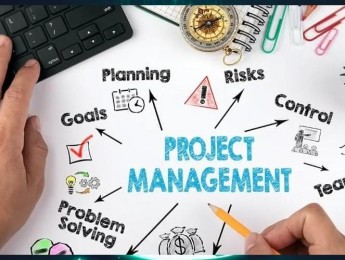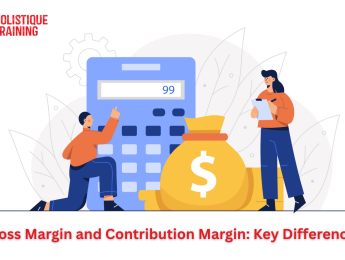- Table of Contents
- Introduction
- What Is Performance Appraisal?
- In What Cases Should a Performance Appraisal Take Place?
- Top 8 Performance Appraisal Methods
- 7 Benefits of Performance Appraisal in HRM
- Your Role As an HR Professional
- The Future of Performance Appraisal: Trends and Innovations
- The Global Perspective: Cross-Cultural Considerations
- Conclusion
Introduction
In the dynamic landscape of modern workplaces, organisations strive to maximise the potential of their employees, foster growth, and drive success. To achieve these objectives, Human Resource Management (HRM) plays a pivotal role in ensuring that employees are performing at their best. One essential tool at the disposal of HR professionals is performance appraisal. In this comprehensive exploration, we will delve into the concept of performance appraisal, its significance, various methods employed, and the benefits it brings to organisations. Additionally, we will discuss the role of HR professionals in implementing effective performance appraisal systems.
What Is Performance Appraisal?
Performance appraisal is a multifaceted process that goes beyond a mere evaluation of an employee's job performance. It serves as a cornerstone of effective human resource management, providing a structured framework for assessing employees' contributions, aligning their efforts with organisational goals, and fostering a culture of continuous improvement.
At its core, performance appraisal is a dialogue—an opportunity for both employees and managers to engage in a meaningful conversation about their work. It offers employees a platform to articulate their achievements, voice their concerns, and chart a path for their professional development. Simultaneously, managers can provide constructive feedback, offer guidance, and acknowledge exceptional efforts. This two-way communication not only helps employees understand their roles and responsibilities more comprehensively but also creates a sense of belonging and engagement within the organisation.
Furthermore, performance appraisal is not confined to the present moment; it's a forward-looking process. It empowers organisations to set strategic objectives and chart a course for the future. By evaluating past performance, organisations can make data-driven decisions about promotions, skill development, and even succession planning. In essence, performance appraisal is a tool for shaping the workforce of tomorrow, ensuring that it remains adaptable, skilled, and aligned with the organisation's ever-evolving needs and objectives. It is not just a tool for management but a catalyst for personal and organisational growth.
In What Cases Should a Performance Appraisal Take Place?
Performance appraisal is not a one-size-fits-all process; it adapts to various organisational needs and circumstances. Understanding when and why performance appraisals should take place is crucial for maximising their effectiveness. Let's delve deeper into the critical instances where performance appraisal proves invaluable:
1. Annual or Bi-Annual Reviews
Regularity is a cornerstone of performance appraisal. Conducting appraisals annually or bi-annually provides a comprehensive overview of an employee's progress over an extended period. This extended time frame allows for the identification of trends and patterns in performance. It also gives employees a structured opportunity to reflect on their achievements and challenges, fostering a sense of continuity and long-term development.
2. Promotions and Compensation Decisions
Identifying high-performing employees deserving of promotions, salary raises, or other rewards and recognition is a fundamental aspect of performance appraisal. When conducted before promotion decisions, appraisals ensure that promotions are based on merit rather than favouritism. By linking appraisals to compensation decisions, organisations motivate employees to consistently deliver their best work.
3. New Hires and Probationary Periods
For newly hired employees, especially during their probationary period, performance appraisal serves a vital role. It helps determine whether they are meeting job expectations and integrating effectively into the organisation's culture. Early feedback during this critical phase can shape their future contributions positively and mitigate potential challenges.
4. Performance Improvement Plans
In cases where employees are underperforming, performance appraisals become a powerful tool for constructive intervention. Instead of merely identifying shortcomings, these appraisals pinpoint specific areas of improvement and establish targeted plans for enhancing an employee's performance. This proactive approach can help struggling employees get back on track and contribute effectively to the organisation.
Table 2: Different cases where a performance appraisal should take place

5. Project or Milestone Evaluations
Beyond traditional timelines, performance appraisal can also occur concerning specific projects, milestones, or significant achievements. This approach allows organisations to celebrate exceptional contributions promptly. It reinforces the idea that outstanding efforts are valued and recognised, motivating employees to continue striving for excellence.
6. Continuous Improvement Initiatives
In organisations dedicated to a culture of continuous improvement, performance appraisal is not limited to specific events but is integrated into ongoing processes. This promotes agility and adaptability, enabling employees to receive timely feedback, make adjustments, and contribute dynamically to the organisation's evolving goals.
7. Leadership Development
High-performing employees with leadership potential can benefit from specialised performance appraisals tailored to their growth as future leaders. These assessments focus on developing leadership skills, strategic thinking, and the ability to influence others positively. Such appraisals are instrumental in identifying and nurturing the next generation of organisational leaders.
In summary, performance appraisal is a versatile and adaptable process that responds to the unique needs of an organisation and its employees. Whether it's a routine annual review, a response to underperformance, or a celebration of exceptional achievements, the timing and purpose of performance appraisals can vary widely. Tailoring the process to align with these critical instances ensures that it remains a valuable tool for employee development and organisational success.
Top 8 Performance Appraisal Methods
Performance appraisal methods are diverse, each offering unique advantages for assessing employee performance. Here are eight widely used approaches, each with its own distinctive features:
Graphic Rating Scales
This method employs a predefined scale with specific criteria to evaluate employee performance. It often includes factors such as job knowledge, quality of work, communication skills, and teamwork. Managers rate employees on each criterion, providing a structured assessment of their strengths and areas for improvement. Graphic rating scales offer clarity and consistency in evaluations, making them a popular choice.
Behavioural Observation Scales (BOS)
BOS focuses on identifying and assessing specific behaviours exhibited by employees. It often targets behaviours crucial to job success, such as problem-solving, decision-making, or customer service skills. Instead of relying solely on subjective judgments, BOS provides concrete examples of observed behaviours, offering a more objective evaluation.
Management by Objectives (MBO)
MBO involves setting performance objectives collaboratively between managers and employees. These objectives are specific, measurable, achievable, relevant, and time-bound (SMART). Periodic reviews assess the progress made toward achieving these goals. MBO aligns individual performance with organisational objectives, promoting clarity and goal-oriented behaviour.
360-Degree Feedback
This method gathers feedback from various sources, including supervisors, peers, subordinates, and even customers. It provides a holistic perspective on an employee's performance, strengths, and areas for improvement. The multi-source feedback enhances objectivity and can uncover blind spots in self-assessment.
Table 1: Features of each performance appraisal methods
Appraisal Method | Description | Key Features |
Graphic Rating Scales | Predetermined scale with specific criteria for evaluation (e.g., job knowledge, quality of work). | Provides structured and quantifiable assessments. |
Behavioural Observation Scales | Focuses on identifying specific behaviours (e.g., problem-solving, decision-making). | Offers concrete examples for evaluation. |
Management by Objectives (MBO) | Collaborative goal-setting followed by periodic reviews. | Aligns individual goals with organisational objectives. |
360-Degree Feedback | Gather feedback from multiple sources (supervisors, peers, subordinates) for a holistic view. | Provides a well-rounded perspective on performance. |
Critical Incident Technique | Documents significant incidents highlighting performance (exceptional or areas needing improvement). | Focuses on specific, real-life examples. |
Ranking Method | Ranks employees from best to worst based on performance. | Helps differentiate high performers from others. |
Self-Assessment | Employees evaluate their own performance and share perspectives. | Encourages self-reflection and self-awareness. |
Peer Review | Colleagues evaluate each other's performance, fostering collaboration. | Provides insights from those who directly observe work. |
Critical Incident Technique
Managers document significant incidents that highlight exceptional performance or areas requiring improvement. These incidents are later used to provide feedback and identify patterns. The critical incident technique emphasises real-life examples, making feedback more concrete and actionable.
Ranking Method
In the ranking method, employees are ranked from best to worst based on their performance. This method helps differentiate between high performers and those who may need additional support. While straightforward, it may not provide the nuanced insights offered by other methods.
Self-Assessment
Employees evaluate their own performance and share their perspective on their achievements, strengths, weaknesses, and areas for development. This method encourages self-reflection and ownership of one's performance. It can be a valuable supplement to manager evaluations, providing employees with a voice in the appraisal process.
Peer Review
In peer review, colleagues evaluate each other's performance. This fosters a collaborative and supportive culture while providing valuable insights from colleagues who directly observe an employee's work. Peer evaluations can reveal teamwork and interpersonal skills that may not be evident in manager assessments alone.
Each of these methods has its strengths and weaknesses, and the choice of method depends on factors like organisational culture, the nature of the job, and the desired outcomes of the appraisal process. Some organisations even combine multiple methods to create a more comprehensive assessment of employee performance. The key is to select the approach that aligns best with the organisation's goals and values while providing a fair and accurate evaluation of employees.
7 Benefits of Performance Appraisal in HRM
Performance appraisal is a pivotal practice in human resource management (HRM) with a wide range of benefits that extend beyond the surface-level evaluation of employee performance. Here's a more in-depth look at the seven key advantages it offers:
1. Enhanced Employee Development
Performance appraisals serve as a springboard for personalised employee development. By identifying strengths and areas for improvement, HR professionals can design targeted training programmes and development initiatives. These initiatives can be tailored to each employee's needs, fostering skill enhancement and career growth. Employees are more likely to excel when they receive the resources and support necessary for continuous improvement.
2. Goal Alignment
Effective performance appraisals help bridge the gap between individual efforts and organisational objectives. By setting clear performance expectations and goals during the appraisal process, HR professionals ensure that every employee's work is directly aligned with the strategic direction of the organisation. This alignment enhances focus, motivation, and the overall contribution of employees.
3. Feedback and Recognition
Regular performance feedback is a morale booster. It provides employees with valuable insights into their work and helps them understand where they excel and where they need to improve. Constructive feedback offered during performance appraisals is not only a tool for improvement but also a form of recognition. Acknowledging an employee's achievements and dedication fosters job satisfaction and motivates them to continue delivering their best.
4. Identifying High Potential Employees
High-potential employees are the future leaders and key contributors to an organisation's success. Performance appraisals are instrumental in identifying these individuals. By recognising and nurturing high-potential talent, HR professionals ensure that the organisation has a pipeline of skilled and capable leaders ready to step into critical roles. This strategic approach to talent management enhances succession planning and organisational resilience.
5. Targeted Training and Development
Appraisal outcomes provide HR professionals with actionable insights into skills gaps and development needs within the workforce. Armed with this information, HR can design targeted training programmes that address specific deficiencies. This not only benefits individual employees but also strengthens the overall skill set of the organisation, making it more competitive and adaptive in a rapidly changing business landscape.
6. Performance-Based Compensation and Rewards
Performance appraisals play a pivotal role in shaping the compensation and rewards structure of an organisation. By evaluating employee performance objectively, HR can make informed decisions regarding salary raises, bonuses, and other incentives. A merit-based compensation system motivates employees to consistently strive for excellence, knowing that their hard work will be recognised and rewarded fairly.
7. Succession Planning
In the world of HRM, succession planning is paramount. Evaluating employee performance through appraisals helps HR professionals identify individuals who have the potential to fill key roles in the future. This foresight ensures smooth transitions in leadership and critical positions, reducing the disruption associated with unexpected departures or retirements. Succession planning is a long-term investment that safeguards an organisation's continuity.
Your Role As an HR Professional
As an HR professional, your role in implementing effective performance appraisal systems is multifaceted and pivotal to the success of both individual employees and the organisation as a whole. Here's a comprehensive exploration of your responsibilities:
Designing Appraisal Processes
Your first and foremost responsibility is designing fair, transparent, and reliable performance appraisal processes. These processes should be tailored to the organisation's unique needs and objectives. This involves:
- Collaborating with key stakeholders, including department heads and senior management, to understand the specific goals of the appraisal process.
- Ensuring that appraisal criteria and methods align with the organisation's values and culture.
- Developing clear guidelines and documentation to standardise the appraisal process, making it consistent and equitable for all employees.
- Staying up-to-date with industry best practices and evolving your appraisal system accordingly to remain effective.
2. Communicating Expectations
Clear communication is essential in performance appraisal. You are responsible for ensuring that employees understand the criteria against which their performance will be evaluated. This includes:
- Creating communication plans to inform employees about the appraisal process, its objectives, and timelines.
- Providing guidance on setting SMART (Specific, Measurable, Achievable, Relevant, Time-bound) goals and performance expectations.
- Addressing any questions or concerns employees may have about the appraisal process, fostering transparency and trust.
3. Training Managers and Employees
Effective performance appraisal requires not only a well-designed process but also informed participants. You play a crucial role in:
- Providing training and guidance to managers on how to conduct fair and effective performance appraisals.
- Educating managers and employees on the purpose and benefits of the appraisal process.
- Offering resources and support to help employees understand how to prepare for their appraisals, such as self-assessment templates and development plans.
4. Facilitating Feedback Sessions
Performance appraisal discussions are at the heart of the process, and your support in facilitating these sessions is invaluable. This involves:
- Coaching managers on delivering constructive feedback and recognition to employees.
- Ensuring that feedback sessions are conducted in a safe and non-confrontational environment.
- Encouraging open and honest dialogue between managers and employees to discuss strengths, weaknesses, and areas for improvement.
- Collaboratively setting development goals and action plans for employees based on appraisal outcomes.
5. Monitoring and Continuous Improvement
Your role doesn't end with the implementation of the appraisal process; it extends to ongoing monitoring and refinement. This entails:
- Continuously monitoring the effectiveness of the appraisal system by gathering feedback from both managers and employees.
- Conducting regular evaluations to identify areas of improvement in the appraisal process itself.
- Analysing appraisal data to detect patterns and trends that can inform HR strategies and organisational decisions.
- Adjusting the appraisal process as needed to address changing organisational needs and industry trends.
6. Ensuring Fairness and Equity
Fairness is a cornerstone of effective performance appraisal. As an HR professional, you must:
- Monitor the appraisal process to ensure it is conducted consistently and without bias or discrimination.
- Address any concerns or disputes related to the appraisal process promptly and impartially.
- Implement measures to mitigate biases, such as providing unconscious bias training to managers.
- Regularly review the appraisal process to identify and rectify any systemic issues that may lead to unfairness or inequity.
7. Leveraging Technology
In the modern era, technology plays a crucial role in streamlining and enhancing performance appraisal processes. You should:
- Explore and implement HR software and tools that facilitate data collection, analysis, and reporting.
- Stay updated on emerging HR technologies to identify opportunities for process automation and efficiency improvements.
- Ensure that any technology solutions used align with the organisation's data privacy and security standards.
The Future of Performance Appraisal: Trends and Innovations
The landscape of performance appraisal is continually evolving as organisations seek more efficient, data-driven, and employee-centric approaches. Here are some key trends and innovations that are shaping the future of performance appraisal:
1. Digitalisation and AI Integration
The digital transformation has left no aspect of HR untouched, and performance appraisal is no exception. Organisations are increasingly adopting digital tools and platforms to streamline the appraisal process. These tools often integrate artificial intelligence (AI) and machine learning capabilities to enhance the accuracy and efficiency of evaluations.
Data-Driven Insights: AI can analyse large sets of data to identify performance trends, patterns, and correlations that might be missed by human evaluators. This data-driven approach allows organisations to make more informed decisions about employee development and strategy.
Automated Feedback: AI-driven chatbots can provide real-time feedback to employees based on performance data, allowing for immediate course corrections and skill development. This real-time feedback fosters agility and adaptability.
2. Continuous Feedback Loops
Traditional annual or bi-annual performance reviews are giving way to continuous feedback loops. This trend recognises that performance should be managed and improved throughout the year, not just during periodic evaluations.
Frequent Check-Ins: Managers and employees engage in regular, ongoing conversations about performance, goals, and development needs. These check-ins are more agile and responsive to changing circumstances.
Real-Time Recognition: Immediate recognition of exceptional performance becomes a standard practice. This instant acknowledgment motivates employees and reinforces desired behaviours.
3. Holistic Well-being Assessment
Performance appraisal is expanding beyond traditional job-related metrics to include aspects of employee well-being. Organisations are recognising that employee satisfaction and productivity go hand in hand with well-being factors, such as mental health, work-life balance, and job satisfaction.
Wellness Metrics: Metrics related to stress levels, work-life balance, and job satisfaction are integrated into performance appraisal processes. Employees are encouraged to discuss their overall well-being during evaluations.
Mental Health Support: Organisations are providing mental health resources and support as part of employee well-being initiatives. Appraisals are opportunities to discuss these resources and encourage their use when needed.
4. Competency and Skill Assessments
Rather than relying solely on traditional job-related criteria, organisations are placing greater emphasis on assessing competencies and skills that are critical for future success.
Soft Skills Evaluation: Evaluations increasingly include assessments of soft skills such as adaptability, creativity, leadership, and emotional intelligence. These skills are seen as essential for navigating complex and rapidly changing work environments.
Learning and Development Plans: Appraisals are used to create personalised learning and development plans that focus on skill gaps and competencies, ensuring that employees are equipped to meet future challenges.
5. 360-Degree Feedback Evolution
360-degree feedback, which gathers input from supervisors, peers, subordinates, and others, is becoming more sophisticated. Organisations are refining the process to ensure more meaningful and actionable feedback.
Customised Feedback: Employees can select specific areas or competencies for feedback, allowing them to tailor the assessment to their development needs.
Feedback Moderation: To ensure fairness and accuracy, feedback from various sources is moderated and validated. This reduces the potential for biassed or unreliable feedback.
6. Remote Work Considerations
The rise of remote work has led to the reevaluation of performance appraisal processes to accommodate virtual work environments. Evaluating remote employees presents unique challenges and opportunities.
Remote Metrics: Performance appraisal criteria may include remote work-related metrics such as communication effectiveness, adaptability to remote tools, and self-motivation.
Virtual Feedback: Virtual performance appraisal discussions are becoming standard, requiring HR professionals to provide guidance on conducting effective virtual evaluations.
7. Data Privacy and Ethical Considerations
As performance appraisal processes become more data-driven, organisations are taking data privacy and ethical considerations seriously. They are ensuring that performance data is collected, stored, and used in compliance with privacy regulations and ethical standards.
Data Protection: Organisations are implementing robust data protection measures to safeguard employee performance data from breaches or misuse.
Transparency and Consent: Employees are given greater transparency regarding data usage and are often asked for consent to collect and use their performance data.
The Global Perspective: Cross-Cultural Considerations
Performance appraisal practices can vary significantly across cultures. It's essential for HR professionals to consider these cultural differences when designing appraisal systems in multinational organisations. Here are a few key points to keep in mind:
Communication Styles
In some cultures, direct and candid feedback is appreciated, while in others, a more indirect and nuanced approach is preferred. HR professionals should adapt feedback delivery to align with cultural norms.
Timing
The timing of performance appraisals can vary. Some cultures may prefer more frequent assessments, while others may value long-term evaluations. Flexibility in timing is crucial.
Recognition and Rewards
What constitutes meaningful recognition and rewards can differ greatly among cultures. HR professionals should tailor these aspects to align with cultural expectations.
Conclusion
Performance appraisal is a vital tool in HRM, empowering organisations to evaluate employee performance, foster growth, and drive organisational success. By implementing effective appraisal systems and employing various appraisal methods, HR professionals can facilitate employee development, align individual efforts with organisational goals, and recognise and reward high performers. With your expertise and guidance, performance appraisals can become a cornerstone of organisational excellence, fostering a culture of continuous improvement, engagement, and success. Embrace the evolving trends and cultural considerations to make performance appraisal a truly global and impactful HR practice.



























